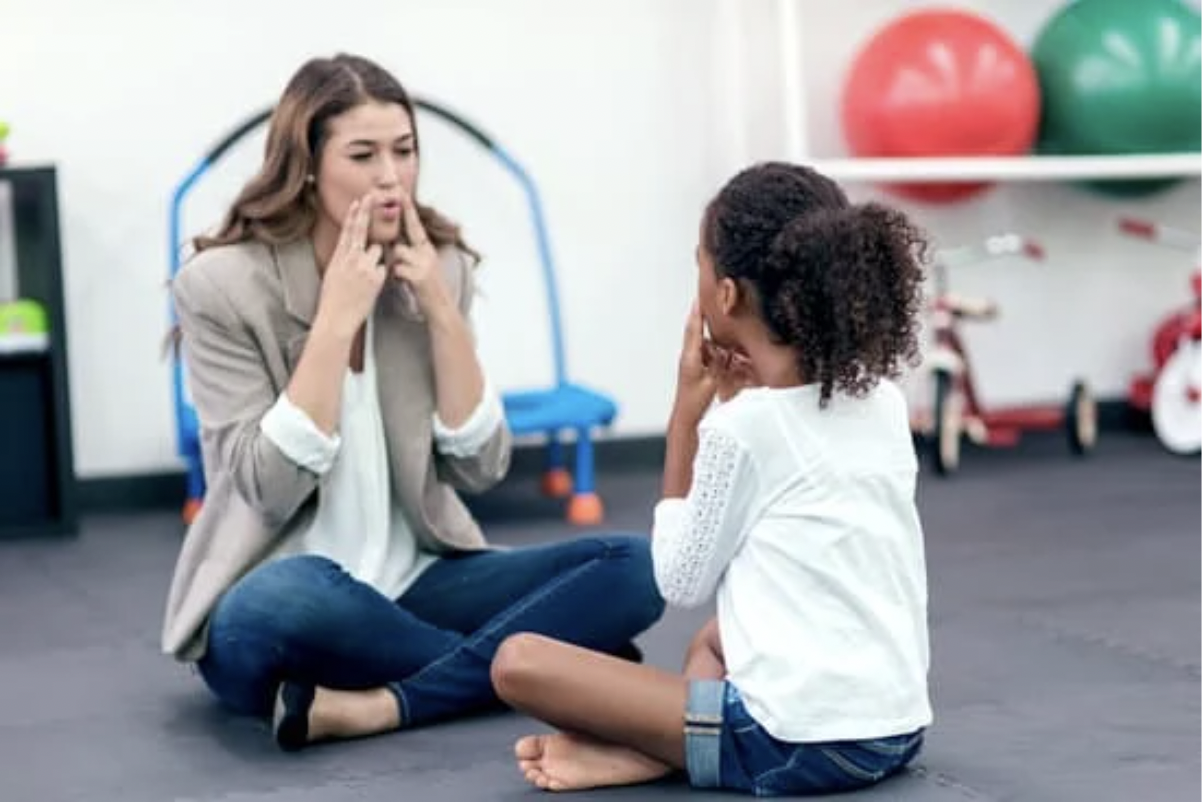What is Childhood Apraxia of Speech?
If your child is having a hard time speaking or being understood, it’s completely natural to wonder why, and what you can do to help. One possible reason could be something called Childhood Apraxia of Speech. Navigating a childhood apraxia of speech diagnosis can be overwhelming at first, but the good news is that with the right support, kids with apraxia can make incredible progress.
Let’s walk through what childhood apraxia of speech is, what signs to look out for, and how speech therapy can help your child speak clearly and confidently.
According to the American Speech-Language-Hearing Association (ASHA), CAS is considered a rare speech disorder, affecting about 1 to 2 children per 1,000.
(ASHA, 2024)
What is Childhood Apraxia of Speech (CAS)?
Childhood Apraxia of Speech is a motor planning disorder. That means the difficulty isn’t with the muscles themselves. It’s with the brain’s ability to tell those muscles what to do when trying to speak.
Children with apraxia usually know what they want to say, but their brains have trouble coordinating the movements of their lips, tongue, and jaw to get the words out clearly and consistently.
Unlike a typical speech delay (where a child might be a little behind but following the expected pattern of development), CAS requires a different and intensive approach. It will not resolve on its own with time.
Signs and Symptoms of Childhood Apraxia of Speech
Every child is different, but some of the more common signs of CAS include:
Limited babbling as a baby
Vowel distortions
Inconsistent errors when saying the same word
Trouble imitating words or sounds
Visible struggle or “groping” with their mouth when trying to talk
Speech that’s harder to understand than it should be for their age
Fewer spoken words than expected
Short words that are clearer than longer ones (e.g., “hi” might be easy, but “banana” is very hard)
Many parents tell us they feel like their child knows what they want to say, but just can’t get it out. That’s often one of the biggest clues.
A 2015 review in the American Journal of Speech-Language Pathology emphasized the importance of accurate diagnosis and intensive, individualized treatment for children with CAS (Murray, McCabe, & Ballard, 2015).
What Does Therapy Look Like?
The good news: speech therapy can help—a lot.
Treatment for CAS is different than treatment for other speech disorders. Therapy is usually:
Frequent (often 2–3 times a week)
Repetitive and highly structured
Focused on practicing specific words or phrases over and over
Supported with visual, tactile, and verbal cues
Centered on helping the brain form and strengthen new pathways for speech
Your speech-language pathologist will choose the right approach (or combination of approaches) depending on your child’s needs. Here are a few evidence-based methods that are often used:
DTTC (Dynamic Temporal and Tactile Cueing) - this method is especially effective for children with severe CAS. It involves the therapist giving a lot of support (like modeling, slowing down speech, or using touch cues), and gradually fading that support as your child becomes more accurate and confident. Developed by Dr. Edythe Strand, DTTC has strong research support as a treatment for CAS. (Strand et al., 2006)
PROMPT uses gentle touch cues on the child’s face to guide the movement of their lips, jaw, and tongue. It helps the child physically feel how to make certain sounds and word sequences. It’s especially helpful for children who benefit from tactile feedback or have co-occurring oral-motor challenges.
ReST (Rapid Syllable Transition Treatment) - This approach focuses on longer multisyllabic words and nonsense words to improve speech motor planning and prosody (the rhythm and flow of speech). It’s typically used with older children (age 4+) who can read or repeat longer word patterns. (Murray et al., 2015).
K-SLP (Kaufman Speech to Language Protocol) - Often used with younger children, the Kaufman approach teaches simplified word shapes first, and then gradually builds up to more complex words and phrases. It helps kids gain confidence and success by starting with what they can say, and then shaping it toward more accurate speech over time.
AAC (Augmentative and Alternative Communication) - In some cases, especially when a child is highly unintelligible or frustrated, therapists may introduce AAC tools—like sign language, picture boards, or speech-generating devices—to support communication while continuing to work on verbal speech. Using AAC does not mean giving up on speech—it actually supports language development and reduces frustration while speech skills are still developing.
A Note About Progress
It’s important to know that progress with CAS takes time. Kids with CAS often make steady gains, but it may take months or even years of consistent therapy to achieve clear, confident speech. That’s why early diagnosis and a strong therapy plan are so important.
How You Can Help at Home
As a parent, you play a huge role in your child’s progress! Here’s how you can support them along the way:
Get an evaluation early if you’re concerned—trust your gut!
Practice at home using the strategies your SLP recommends.
Encourage all communication, including gestures, signs, and devices, if needed.
Celebrate small wins—every new sound or word is a big deal.
Be patient and positive—your encouragement matters more than you know.
Childhood Apraxia of Speech can be a challenging diagnosis, but you’re not alone, and neither is your child. With early intervention, skilled speech therapy, and lots of love and support at home, children with CAS can and do learn to speak more clearly.
If you have questions or concerns about your child’s speech, we’re here to help. Reach out to schedule an evaluation with a licensed speech-language pathologist who understands CAS and can guide your family every step of the way.


